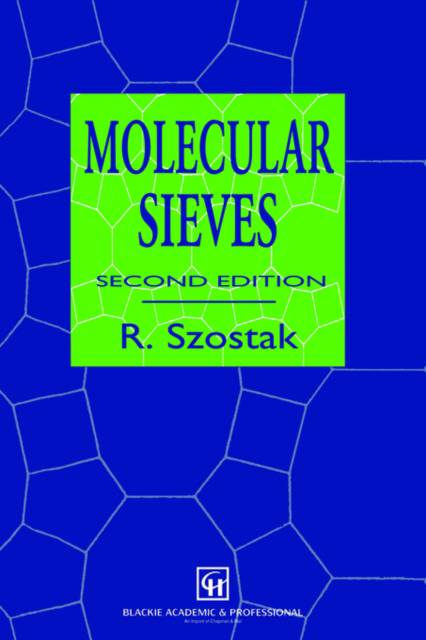
- Afhalen na 1 uur in een winkel met voorraad
- Gratis thuislevering in België vanaf € 30
- Ruim aanbod met 7 miljoen producten
- Afhalen na 1 uur in een winkel met voorraad
- Gratis thuislevering in België vanaf € 30
- Ruim aanbod met 7 miljoen producten
Zoeken
Omschrijving
The porous structure of molecular sieves, combined with their chemical composition, makes them uniquely suitable for use as catalysts or catalytic supports. As such, the materials are used in a wide range of chemical reactions, and as components of formulated products. The shape selectivity of the materials further enhances their chemical usefulness, and exploitation of their unique absorption properties holds the key to improving their catalytic properties. To that end, great efforts are being made to find new of different molecular sieves, with altered or tailored structures or chemical composition.
The synthesis and characterisation of molecular sieve materials is a considerable challenge, testing both the chemist's understanding and practical skills. In a thorough overhaul of the very successful first edition of this book, the author guides the reader in the basics of sieve structure, synthesis and characterisation, and points the way to the development of new or improved sieve materials.
By covering both the principles and practical aspects of sieve synthesis and characterisation, professional chemists, particularly those involved in industrial research and development, will find this book an essential guide to the current state of the art, and a useful starting point in their own research. Academic chemists, including postgraduate students, will find this book an invaluable guide to this exciting and important area of chemistry.
The synthesis and characterisation of molecular sieve materials is a considerable challenge, testing both the chemist's understanding and practical skills. In a thorough overhaul of the very successful first edition of this book, the author guides the reader in the basics of sieve structure, synthesis and characterisation, and points the way to the development of new or improved sieve materials.
By covering both the principles and practical aspects of sieve synthesis and characterisation, professional chemists, particularly those involved in industrial research and development, will find this book an essential guide to the current state of the art, and a useful starting point in their own research. Academic chemists, including postgraduate students, will find this book an invaluable guide to this exciting and important area of chemistry.
Specificaties
Betrokkenen
- Auteur(s):
- Uitgeverij:
Inhoud
- Aantal bladzijden:
- 360
- Taal:
- Engels
- Reeks:
Eigenschappen
- Productcode (EAN):
- 9780751404807
- Verschijningsdatum:
- 31/12/1997
- Uitvoering:
- Hardcover
- Formaat:
- Genaaid
- Afmetingen:
- 163 mm x 240 mm
- Gewicht:
- 839 g

Alleen bij Standaard Boekhandel
+ 502 punten op je klantenkaart van Standaard Boekhandel
Beoordelingen
We publiceren alleen reviews die voldoen aan de voorwaarden voor reviews. Bekijk onze voorwaarden voor reviews.











